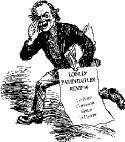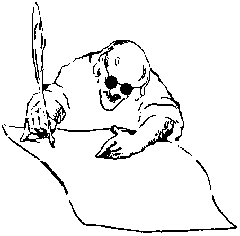
 |
 |

| Wednesday, April 24, 2024 |
Miles from the Mainstream |
D.
R. ZUKERMAN, proprietor |
Added Memories of Winsted, Wabigoon and Wahanda
July 5, 2020 -- Winsted got its name from combining the Win from Winchester with the sted from Barkhamsted. The Village of Winsted, Minnesota was named for Winsted by Winsted native Eli Lewis on July 30, 1857. Camp Wabigoon got its name from Wabigoon Lake, in northwestern Ontario, Canada. Wabigoon comes from the Ojibwe "waabigon" -- marigold, or "waabi-miigwan" -- white feather. (Joe Brandstein, one of Phil's brothers, liked to fish and probably fished at Wabigoon Lake. The Wabigoon River flows into the lake.) While we traveled to places like Tanglewood and to intercamp games by bus, we traveled to town by taxi, Riiska's taxis. It might have been the summer of 1953, waiting for a taxi to take us back to camp that the dispatcher pointed to the stream about 20 feet below the taxis shack, running alongside the narrow Main Street , and told us: "You see that trickle" -- seemingly ironically named the Mad River -- "well it flooded the town in 1938." We were impressed, having no clue that we would see the wreckage, in two years, caused by an even angrier Mad River. In August 1955, a few days before we were to perform The King and I as the "Big Show," the rains of Hurricane Carol washed over the area. The rains stopped shortly before the curtain rose on that "Big Show," Saturday evening, August 13, 1955. The next day, the skies were clear and we had the Wahanda circus in the afternoon, followed by the Color War break. That was on the 14th. Color War continued through Wednesday, the 17th. That night, just as Color War was ending with the competitive Sing, it began to rain again, this time the rain came from Hurricane Diana. It rained all that night and throughout that Thursday, the 18th. The skies cleared the morning of Friday, the 19th, and as we made our beds and cleaned our bunks after breakfast, we heard newscasts mentioning our town of Winsted. Winsted: on national news! And so we learned that the night of the 18th-19th, that "trickle" pointed out to us two years before -- the aptly name Mad River -- had flooded, coursing down Main Street, turning the narrow street into a canyon, knocking down some buildings, twisting around others. And eight lives were lost, including Manny LeShay, the proprietor of the United Cigar Store on Main at Elm, known to most of us at Wabigoon and Wahanda. He had been caught in the floodwaters, along with seven other people in Winsted. The eight names are on a memorial stone in the center of town (See image above.) |
The Flood of 1955 proved even more deadly and damaging than that storm of 1938. After the wreckage had been cleared from Main Street, all remaining buildings on the Mad River side of Main Street were torn down, and the street widened, with the effect that the multi-lane highway that replaced narrow Main Street became an invitation for motorists to drive through town, rather than stop for in-town shopping. It's been some 15 years since I last was in Winsted. My last visit, there were not a few empty stores in town. We left camp for New York on schedule, August 26, 1955, but before we returned home, the seniors at Wabigoon walked down Spencer Road (perhaps a two-mile walk) to see for ourselves the devastation Winsted suffered by the two-fisted hammering of Hurricanes Carol and Diane. No, there were no Riiska's cabs to take us to town, or back up Spencer Road that last Sunday of camp, 1955. The image of the devastation has remained in my mind's eye these 65 years. Also in mind's eye is the aurora borealis I recall seeing one camp summer night. (Wabigoon was located on top of Smith Hill, where Smith Road met Spencer Road.) More frequently -- that is every night but a cloudy night, the sky above Wabigoon displayed a stellar panorama, featuring the Milky Way, the Big Dipper, the North Star, and Orion among the constellations. What a heavenly bunk cover we had above the Wabigoon campus. And what bright nights, when the full moon glowed above the camps (lighting the way for sneakouts, but that's another story.) A person sidelight. My mother, Anna Zukerman, with other parents, stayed as a guest at camp, that week that began with Color War and ended with The Flood. My father had planned to drive up to camp that Friday night, August 19. A great many roads had been washed away, bridges too had become impassable, but somehow, going from one back road to another, he made it to camp, very early on the morning of the 20th. That was an amazing feat for anyone and I never did learn how he quite managed to make it to camp, but Sol Zukerman accomplished the treacherous trip and I remain proud of him for that journey, worthy of a highly-professional driver. It was several days later that the National Guard constructed Bailey bridges, where washed out bridges once stood (including making it possible for us to get through Torrington, CT and home to New York City).

|
|
